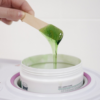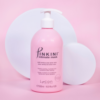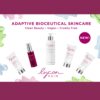There are many different types of waxes available in the marketplace today but not all waxes are made equal or with the same ingredients. Different types of waxes serve different purposes (for example Hard versus Soft wax) and different added ingredients also have various underlying purposes. Becoming knowledgeable on the base ingredients and the added ingredients that compose a wax will help when selecting the right wax for your client.
First, what is the difference between Hot (Hard) wax and Strip (Soft) wax? Are the ingredients the same or do they vary? Can you use them on the same areas?
Hard (or Hot) wax is a type of depilatory wax that is applied and removed without a strip whereas Strip (or Soft) wax is applied and removed with a strip. Hot wax is perfect for smaller area waxing such as face, bikini, Brazilian, underarm and even around sensitive areas like the neckline.
Strip wax is great for larger areas such as legs, back and chest. It is most economical and efficient for larger areas as you will use less wax and you can remove the hair fast and efficiently.
Both Hard and Strip wax are composed of various ingredients which can include beeswax, hydrogenated rosin, gum rosin, plus added active ingredients that specifically target certain skin concerns or serve a purpose such as reducing redness.
A few added active ingredients to look for include:
Micro Mica which adds a metallic shine to the wax. It helps with the wax gliding onto the skin and leaves less residue.
Titanium Dioxide is great for sensitive areas and sensitive skin clients as it helps to soothe the skin and reduce redness. It will also give a wax a “creamy” appearance.
Soothing ingredients such as Chamomile or Rose are excellent as they act to further soothe the skin after a wax. Additionally, Aloe Vera or Argon Oil are also quality ingredients to look for in waxes especially when selecting a wax for clients with sensitive skin.
In terms of post waxing products, it is always good to have at least two options so that you can tailor your service to your clients needs. Aloe Vera is excellent to add moisture into the skin and to further soothe the area after a wax. Tea Tree is known for its powerful antiseptic properties and healing abilities. When applied to the skin after waxing, it soothes, and reduces inflammation. Many after waxing lotions contain Tea Tree as a result.
Ingredients are listed on the packaging of waxes and products. It is important to spend some time and gain an understanding of the ingredients in all the products in your wax room as clients can have allergies to some ingredients or have requests such as for a vegan wax. Knowing which products to avoid and when to use certain ones, will allow you to provide the best possible waxing service each time while reducing the potential for irritation or skin reactions.





